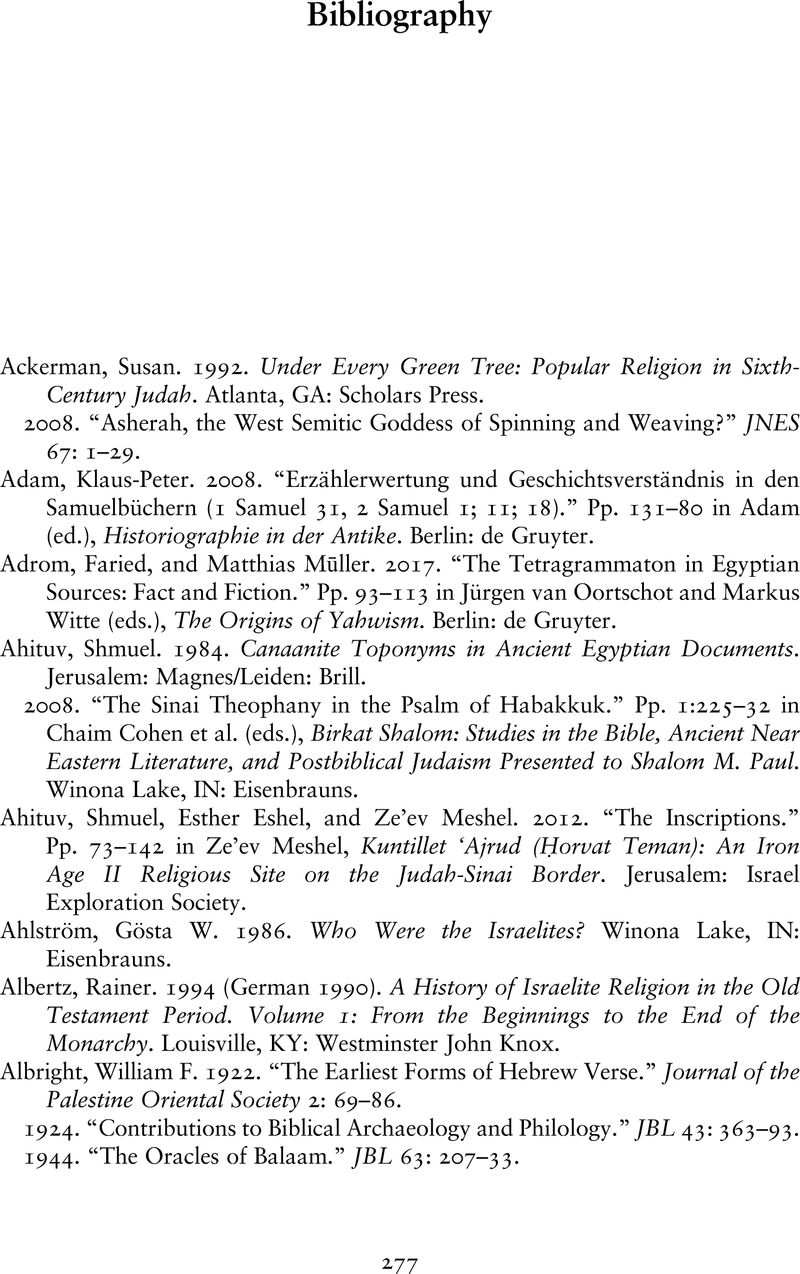Book contents
- Yahweh before Israel
- Yahweh before Israel
- Copyright page
- Dedication
- Contents
- Figures
- Preface
- Acknowledgments
- Abbreviations
- 1 Introduction
- 2 Yhwʒ of Shasu-Land
- 3 The Midianite Hypothesis
- 4 The Old Poetry
- 5 The Name Yahweh
- 6 The People of Yahweh
- 7 The Early Character of the God Yahweh
- Bibliography
- Ancient Near East Index
- Scripture Index
- Subject Index
- References
Bibliography
Published online by Cambridge University Press: 17 November 2020
- Yahweh before Israel
- Yahweh before Israel
- Copyright page
- Dedication
- Contents
- Figures
- Preface
- Acknowledgments
- Abbreviations
- 1 Introduction
- 2 Yhwʒ of Shasu-Land
- 3 The Midianite Hypothesis
- 4 The Old Poetry
- 5 The Name Yahweh
- 6 The People of Yahweh
- 7 The Early Character of the God Yahweh
- Bibliography
- Ancient Near East Index
- Scripture Index
- Subject Index
- References
Summary

- Type
- Chapter
- Information
- Yahweh before IsraelGlimpses of History in a Divine Name, pp. 277 - 300Publisher: Cambridge University PressPrint publication year: 2020



